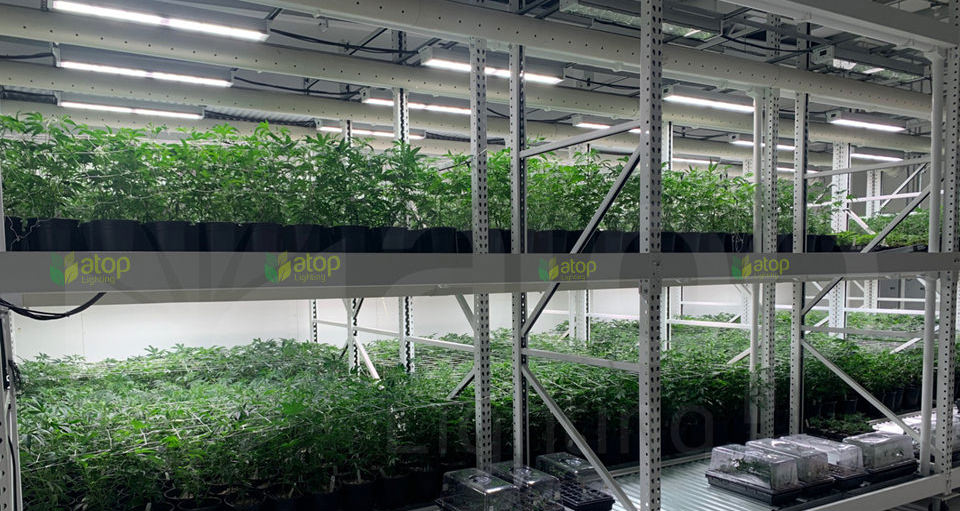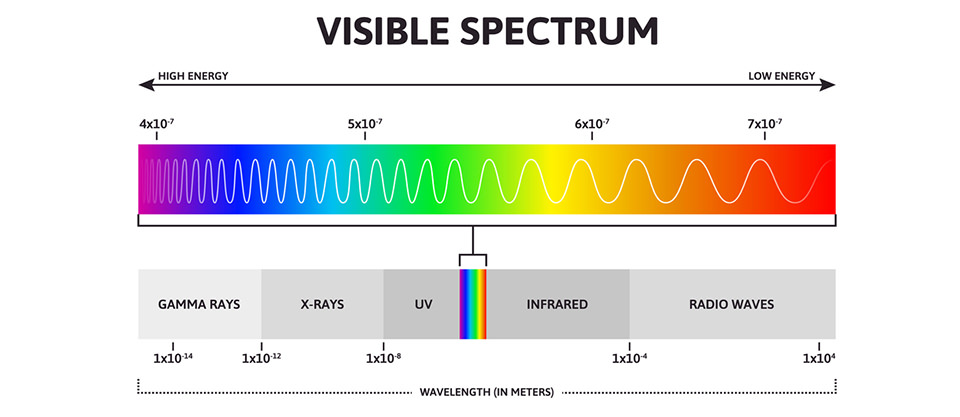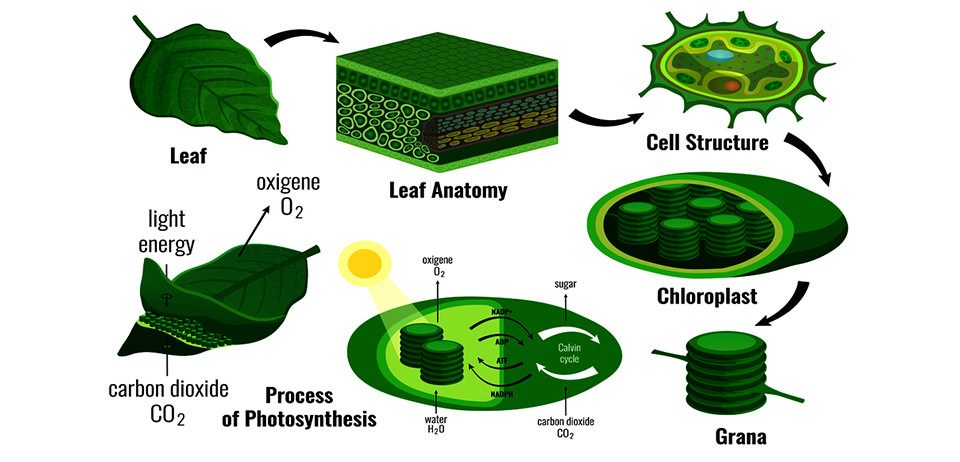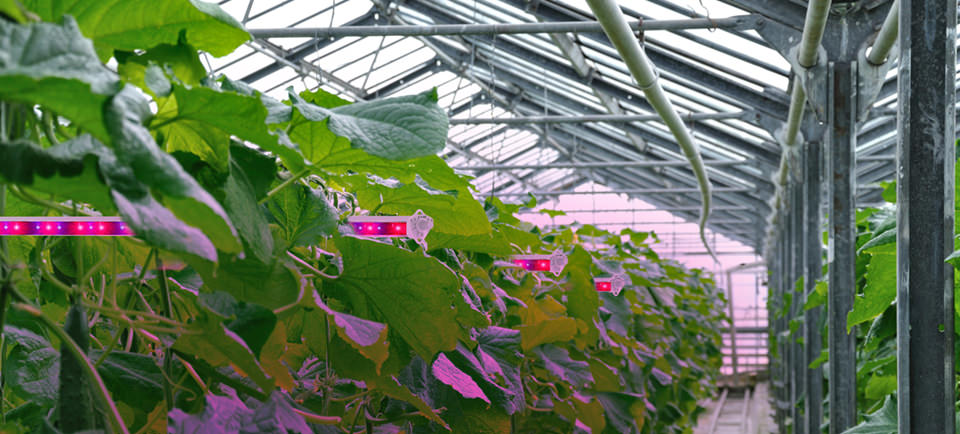Effects of Light Quality on Plant Growth
Light is really important for the growth of plants. Photosynthesis, germination and growth form are highly rely on light. Plants react variously according to season or even time of day in natural. Photoreceptor in plants sense the light changes, such as light intensity, light quality, light period, etc. The reactions to light changes control the whole lifetime from germination to the end of seed production. Convention cultivation was limited by the weather condition as well as climate change. Development of LED grow lights provides an option for optimizing growth, productivity and even customized morphology without weather and climate limitation.
Sense of plants to light are different from humans eyes. Artificial LED grow lights simulate the natural light to help plant grow better. Light quality is one of the most critical factors for plant growing in a artificial light environment. Appropriate light quality is able to improve plant growth, achieving a more robust morphology. This post would take a look at effects of light quality on plant growth.

What is light quality
Light quality is the spectral distribution of light, or the light particles at each wavelength within the electromagnetic spectrum. Wavelength determines the energy of each light particles. Each light particles has different packet of energy or radiation called photons. The energy of photons is conversely with the wavelength. In other words, the shorter the wavelength, the higher the energy, and vice versa.
As known, plants sense light and respond the light with photosynthesis. Light spectrum related with plant growth is divided into UV light (100 - 400 nm), blue light (400 - 500 nm), green light (500 - 600 nm), red light (600 - 700 nm), and far-red light (700 - 850 nm). This range of wavelength sensed by plants is not all perceivable by human eyes. Wavelength ranges from 400 nm to 700 nm is defined as Photosynthetically Active Radiation (PAR). photosynthesis is most effective within the PAR. Most LED grow lights are manufactured with high light quality within the PAR range called full spectrum grow light for maximized plant growth.

What are the responses of plants to light
Plants absorb lights and respond with photosynthesis and photomorphogenesis. Light, chlorophyll, carbon dioxide, water, and proper temperature are the main components for photosynthesis while light has the leading affect for photosynthesis.
Energy is absorbed and transferred to the photosynthetic apparatus during photosynthesis, such as Photosystem I (PSI), Photosystem II (PSII) and ATP synthase. The photoreaction photosynthesis process is conducted by the release of electrons through hydrolysis reaction on the PSII side, then NADP+ reduces to NADPH and protons flow into the lumen to produce ATP. The generated NADPH and ATP are the energy sources for the carbon fixation process.
Chlorophyll is the mos plenteous pigment in the chloroplast of plant that being able to absorb light. Chlorophyll consists of chlorophyll a and chlorophyll b, which are mainly absorb the light in wavelength from about 400nm to 640 nm. Carotenoid is another pigment existing in all photosynthetic organism. Carotenoid also has the ability to absorb light, mainly within the wavelength from about 460 nm to 550 nm. The amount of light absorbed by chlorophyll and carotenoid vary from wavelength. At the PAR range (400 nm - 700 nm), the amount of light absorbed is increasing continuously and then reaches the peak at about 450 nm. After that, it decreases to almost zero at about 500 to 550 nm, followed by increase again till rank the top at about 700nm.

How does light quality affect plant growth
Plant growth is related with light quality closely. Though the specific effects of light quality are varied from plants species, light quality has common and similar effects on most of plants. Light wavelength that associated with plants growth includes UV light (100 - 400 nm), blue light (400 - 500 nm), green light (500 - 600 nm), red light (600 - 700 nm), and far-red light (700 - 850 nm). Generally speaking, UV light can protect plants from pests and fungus, and it can increase the cannabinoids content like THC and CBD in cannabis. Blue light has the effects on plant growth and flowering, suitable amount of blue light specially increase the quality of leafy green plants. Green light has less impacts on plant growth as the lower absorption of chlorophyll. But it is indispensable for indoor growing due to the leak of natural sunlight. Red light promotes plants growing taller with thinner leaves. Far-red light can increase leaf expansion and boost flowering.
Artificial LED grow lights are more concentrate on the effects of blue light, red light and different R: FR (Red: Far-red light) ratio. Light quality of these light spectrum have greater influence on plant growth with the use of artificial LED grow light.
Blue light effects
Blue light promotes the photosynthesis by motivating stoma opening and letting more carbon dioxide enter the leaves. Different levels of blue light has distinct effects on plant growth. High intensity of blue light inhibits phytochrome effects and cell expansion. As a result, leaf growth and stem stretch are inhibits. However, shortage of blue light will reduce the root: shoot ration while increasing the leaf area ratios. The reason of forward phenomenon is the influence of starch accumulation in leaves. Blue light encourage plants to sprout and development roots. Consequently, blue light is beneficial for seeding and vegetative stages to achieve a robust root and stem.
Red light effects
Red light ranks the peaks of chlorophyll absorption, being the most effective light waveband for photosynthesis. Red light introduce stem and leaf growth, especially for vegetative stage. Plants will grow to undesirable morphology - tall with thin leaves, under the single use red light commonly. Therefore, combination of blue light and red light is essential for plant growth. Addition of proper blue light balance the light quality and contribute to more compact plant structure with thicker leaves. Artificial LED grow lights with full spectrum can help plants grow in a healthier form.

R: FR ratio effects
R: FR ratio is responsible for controlling the shade-avoidance syndrome. Phytochromes senses the R: FR ratio, low R:FR ratio and the location under the canopy shade will trigger plants to elongate and extend leaves to approach light for survival. It can also speed up flowering and producing seeds earlier. Plants under the low R:RF ratio are not respond elongation and flowering concurrently in common. Plants will respond to the change of light environment with chloroplast level modification. This response is so called photosynthetic acclimation. With the increase of R:FR ratio, the amount of chlorophyll increase. Higher levels of R: FR also increase the node number and the weight of shoots.

